Johnson’s smokestack: Owner’s alley request seen as chance to “leverage” historic tribute
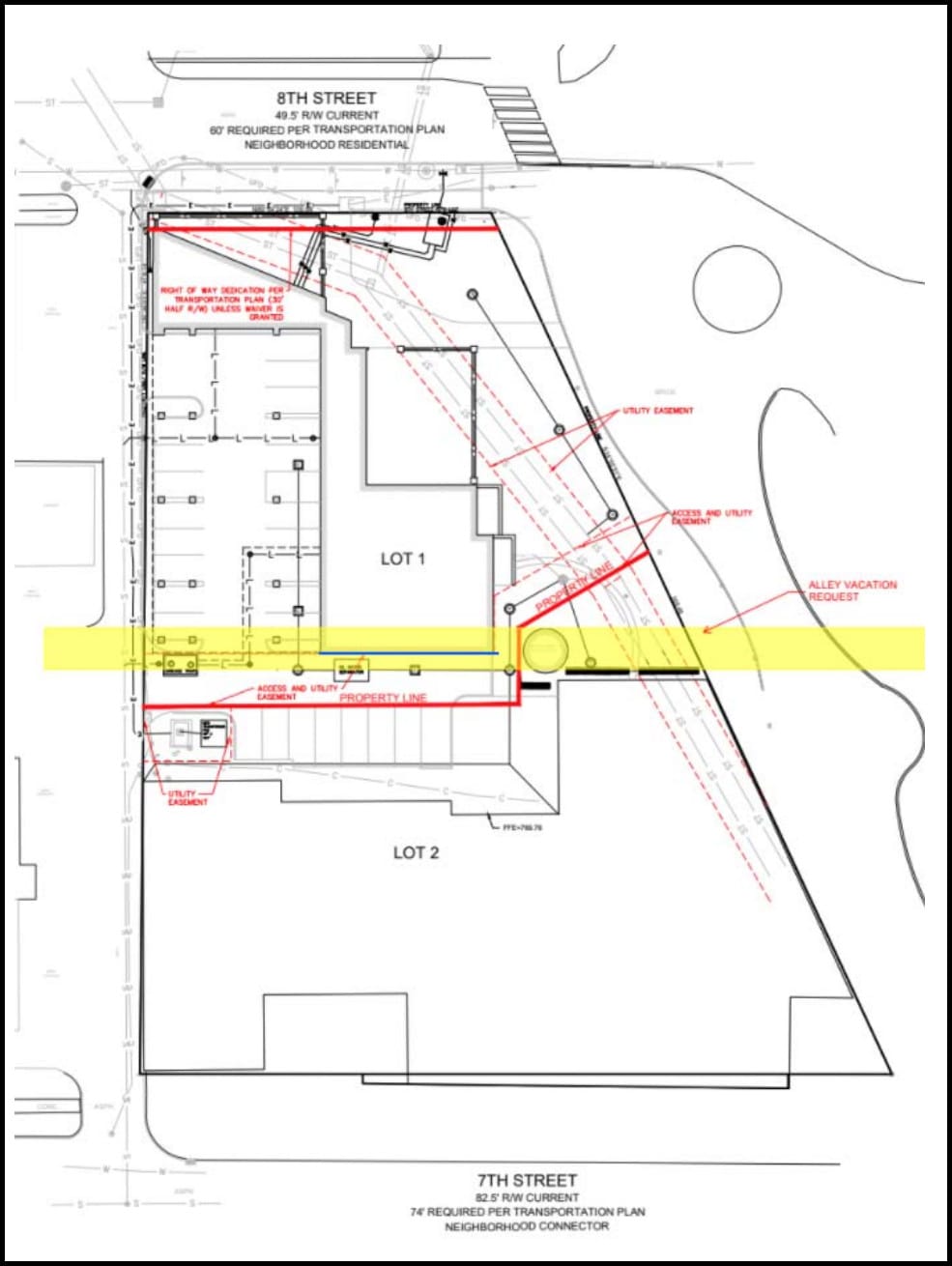
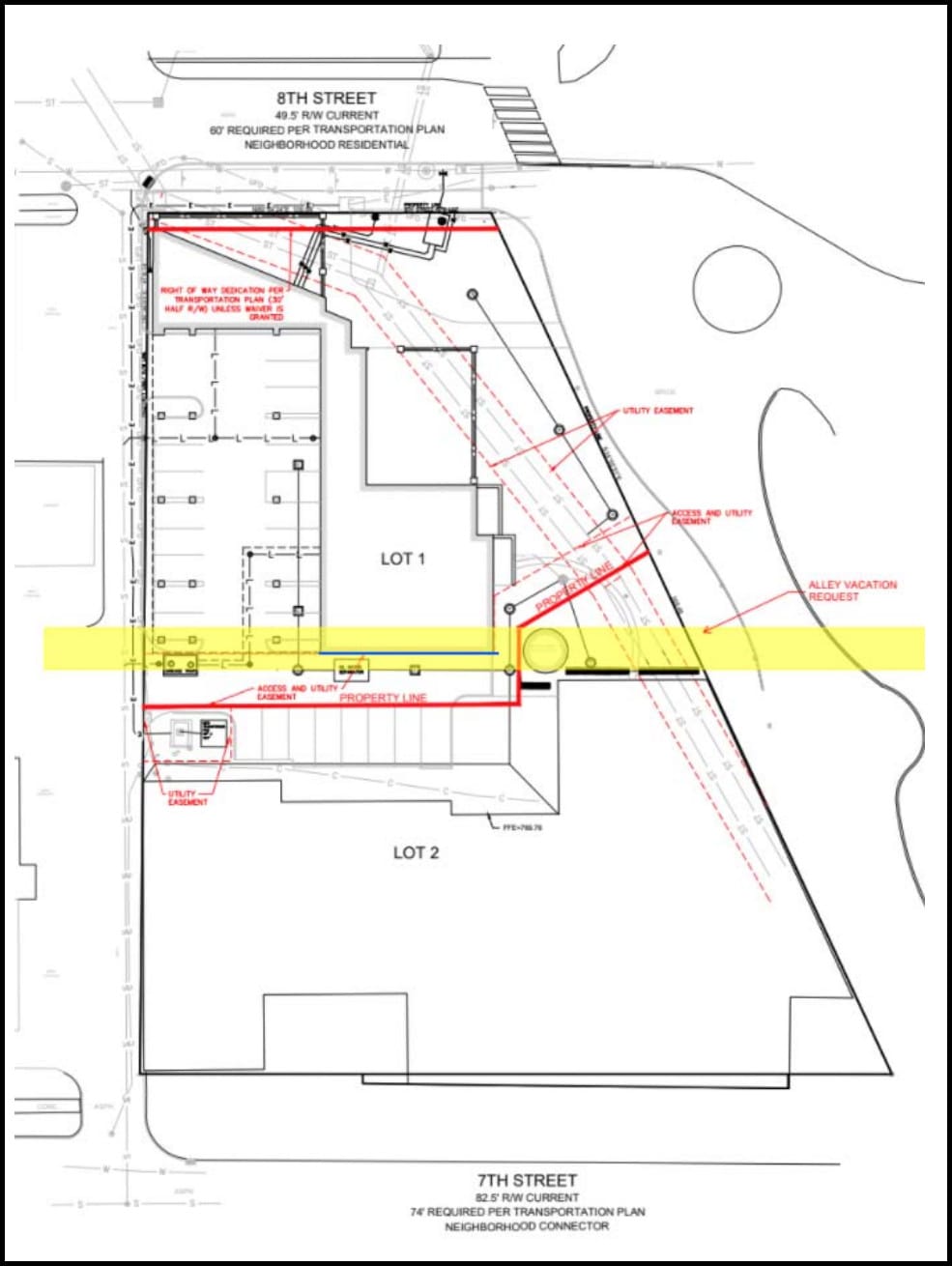
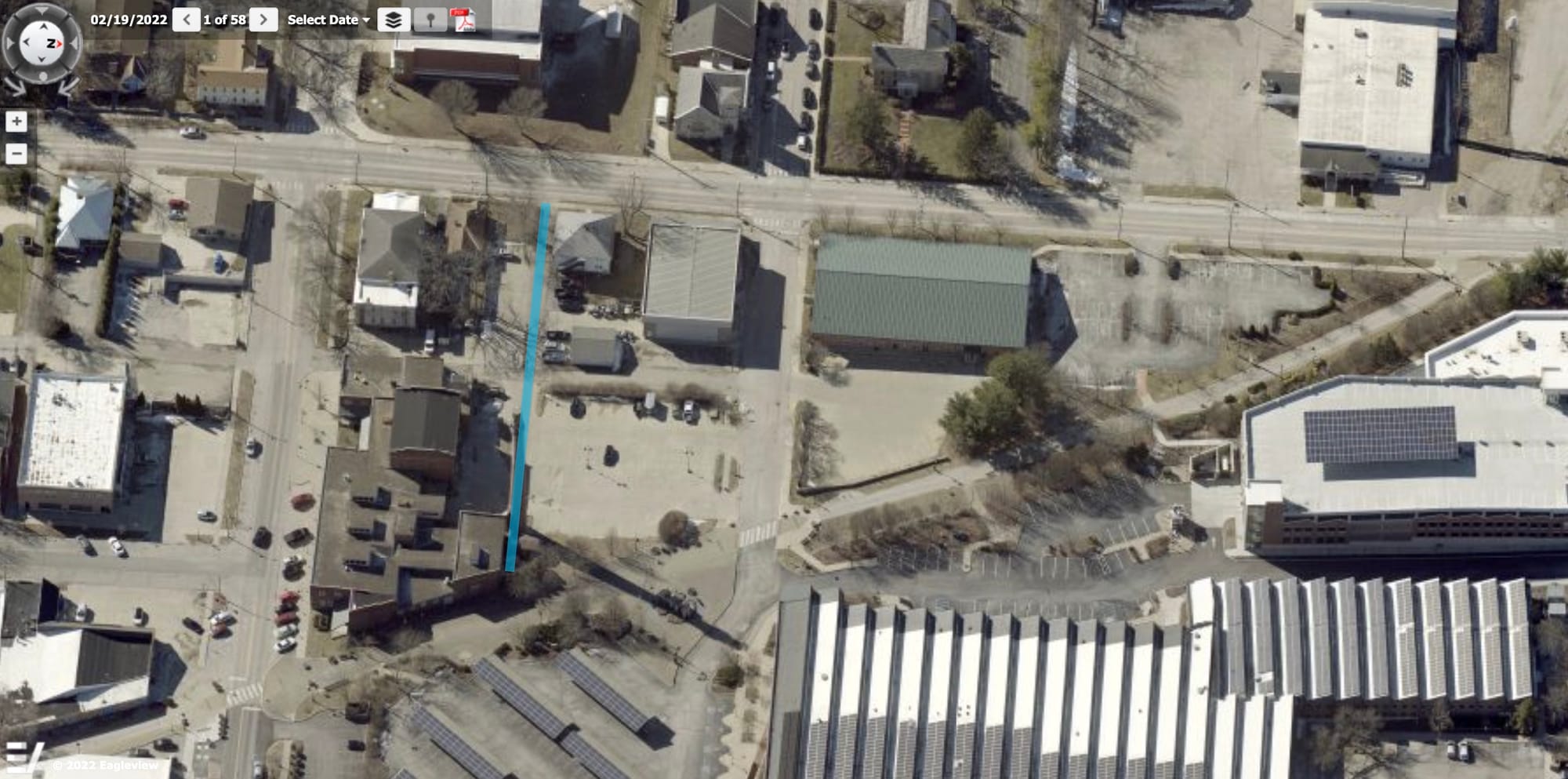
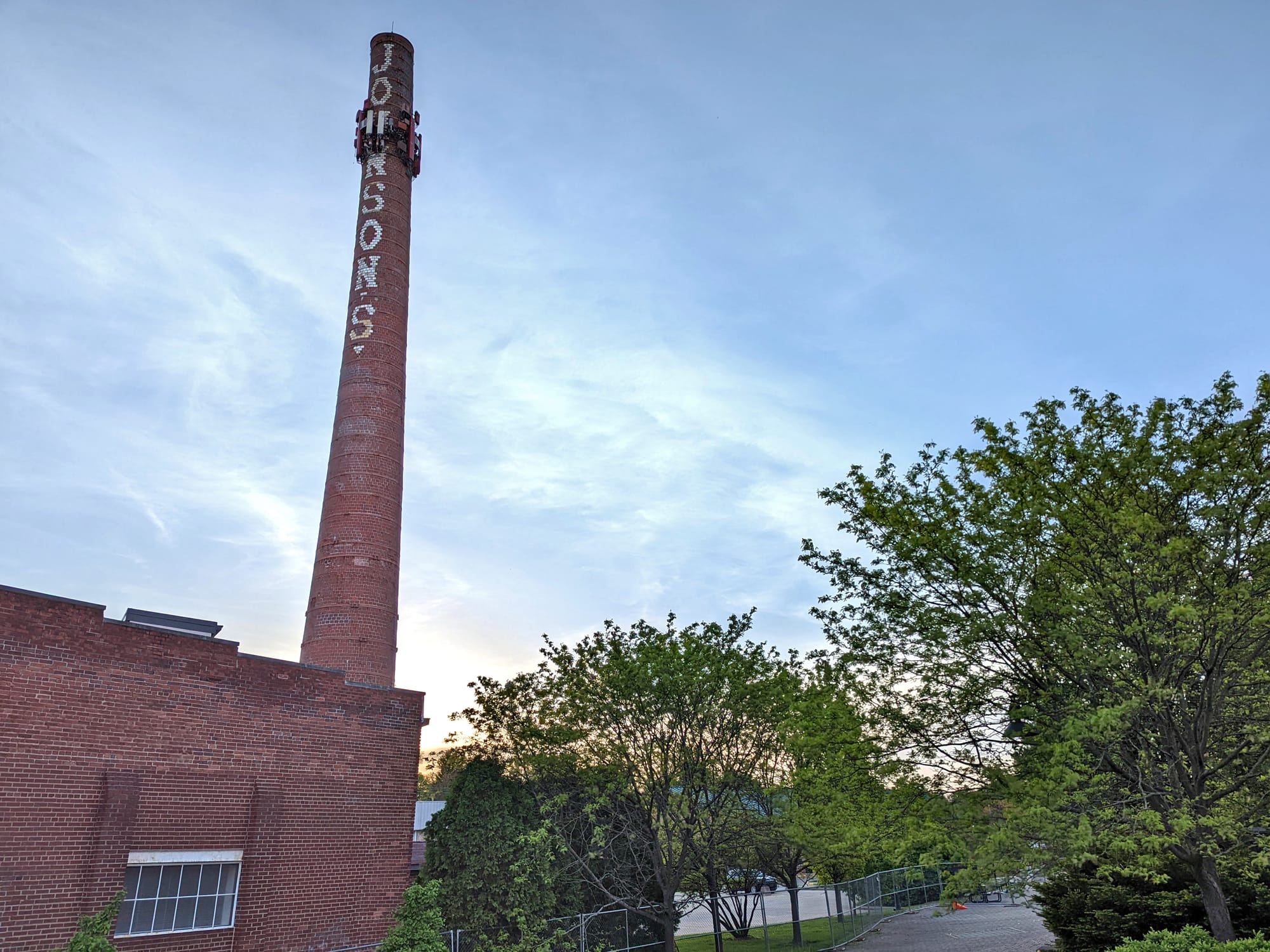
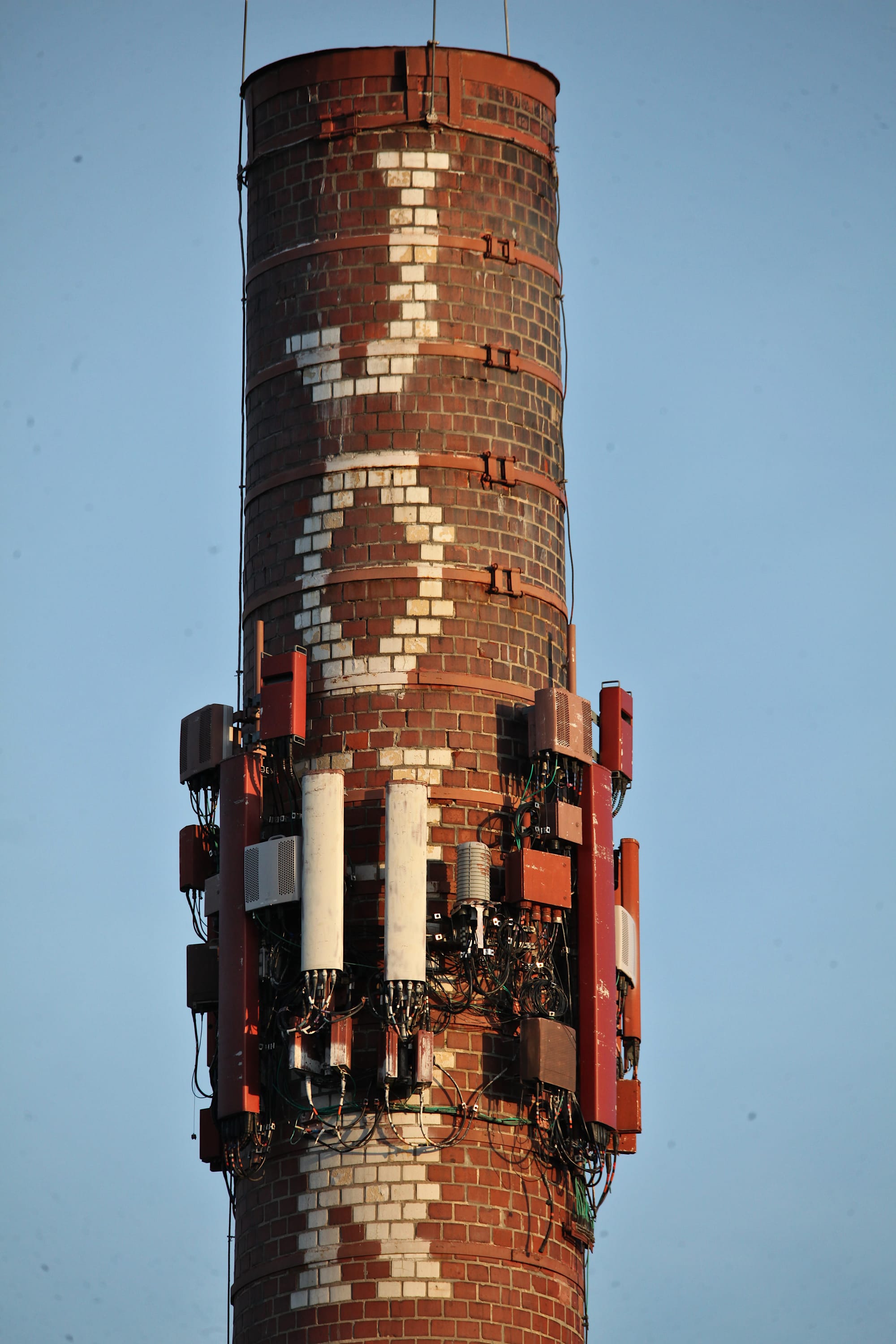
The Johnson’s Creamery smokestack will soon be back in the civic spotlight—for two reasons.
First, at its meeting this Tuesday, Bloomington’s three-member board of public works will be asked to affirm an order from the city’s housing and neighborhood development (HAND) department, which requires AT&T to remove its communications equipment from the top of the smokestack by midnight on May 31.
The removal of AT&T’s equipment will help set the stage for the owner’s partial demolition of the smokestack—from 140 feet down to 60 feet. The building, with its smokestack, is owned by Peerless Development.
The partial demolition was ordered by HAND because an engineering study determined the smokestack is unsafe.
Second, Peerless Development will be asking the city council to vacate an east-west alley that cuts across the parcel.
The alley vacation is needed in order for Peerless to move ahead with a development on the northern part of the parcel. The housing development is supposed to include 51 apartments, right next to the B-Line Trail. Bloomington’s plan commission approved the site plan for the new development in October 2021.
The request for an alley vacation will likely land on the city council’s May 18 agenda as a first reading, and possibly get final action at the council’s regular meeting on June 1.
Vacating a public-right-of-way means that the city is ceding to a private entity the public’s claim to the land.
In connection with the requested alley vacation, Bloomington’s city council could be looking to extract a concession from Peerless to construct some kind of creative artwork to commemorate the lost height of the smokestack. That’s based on the discussion at the city council’s work session held last Friday.
The idea of a commemorative artwork is not new.
In late March, when Bloomington’s historic preservation commission (HPC) deliberated on allowing a partial demolition of the smokestack, some commissioners wanted to attach a condition to the certificate of appropriateness for the for the demolition.
The condition would have required the owner to submit a proposal to the HPC for “a creative interpretation installation” to commemorate the lost height of the smokestack.
The HPC eventually greenlighted the partial demolition, without any conditions.
At last Friday’s work session, Bloomington’s director of planning and transportation, Scott Robinson, helped brief the three city councilmembers who attended—Susan Sandberg, Ron Smith, and Sue Sgambelluri. Robinson told them that for vacations of right-of-way, they had “a lot of discretion” to apply the criteria that were adopted by the council 35 years ago.
The criteria are ensconced in a resolution, approved by the city council in 1987. [Res 87-02] From that resolution, the criteria are:
1. Current Status – Access to Property: the current utilization of the right-of-way in question – as a means of providing vehicular or pedestrian access to private property, churches, schools, or other public places, for public utility or drainage purposes, or for other public purpose.
2. Necessity for Growth of the City:
a. Future Status – the future potential for public utilization, possible future need for the right-of-way due to future changes in land use;
b. Proposed Private Ownership Utilization – the proposed utilization of parcel in question if it reverts to private ownership, potential for increased benefit to the City under private ownership (does the proposed use contribute to the orderly growth of the City);
c. Compliance with regulations – the effect of vacation upon compliance with all applicable regulations: subdivision, zoning, access control, off-street parking (does the vacation present a non-compliance problem or hinder future compliance upon anticipated development or change of use?);
d. Relation to Plans – the relationship of vacation with the Master Plan, Thoroughfare Plan, Neighborhood Plans, or any special studies that might apply
At Friday’s work session, Bloomington’s corporation counsel Beth Cate supported what Robinson had told the trio of councilmembers about applying the criteria: “You do have flexibility. It’s a public asset.”
Cate continued by saying that Peerless had been “very reluctant to do anything with the smokestack.” According to Cate, Peerless had been reluctant to reduce the smokestack to a height recommended in the engineer’s study.
The city council approved the designation of the building as a historic district in early April. According to Cate, Peerless has also claimed that there’s no obligation for Peerless to do anything to commemorate the historic nature of the district, including the stack.
The legal argument made to the HPC in March by Christine Bartlett, who is counsel for Peerless, was based on the idea that the HPC had no authority under city code or state statute to impose a condition on a certificate of appropriateness.
Even though HPC members were not necessarily persuaded by that argument—the city’s legal department was telling them a different story—they did not try to impose a condition on the certificate of appropriateness.
Now, it looks like at least some city councilmembers want to use the alley vacation request, in connection with the housing development, to extract a concession from Peerless to commemorate the smokestack’s lost height after its partial demolition.
The idea is that without a commitment to commemorate the smokestack, the council would withhold its approval to vacate the alley.
At Friday’s work session, council president Susan Sandberg said, “This is a good leverage tool, and I would hope that council would use it.”
Deputy mayor Don Griffin, who attended the council’s Friday work session, weighed in supporting the idea that some kind of commemorative effort should be made. Griffin said, “We’re allowing them to take down something that a lot of folks consider an icon of Bloomington—and to have it just sit there, half-mast or whatever, looking stubby…” Griffin described the housing project as “luxury apartments with no component for affordability.”
Sandberg responded to Griffin by saying that the alley vacation means, “We have some leverage.”
Councilmember Ron Smith, who had some experience with Peerless Development, in connection to his role as city council’s representative to the plan commission, expressed some surprise at Cate’s description of Peerless as not being interested in pursuing some type of commemoration. Smith had found Peerless to be “really easy to work with.”
Planning director Robinson responded to Smith by saying that Peerless is “very engaged and interested” in making their housing project move forward. From that Robinson concluded, “So I think that some gives you some ability to negotiate or leverage some of that.”
Smith said he thinks at least a plaque describing the history of the smokestack would be appropriate and would not cost all that much.
Councilmember Sue Sgambelluri asked Cate about the legal structure of any agreement by Peerless to commit to creating some commemorative art. Cate said she is working on that.




Comments ()